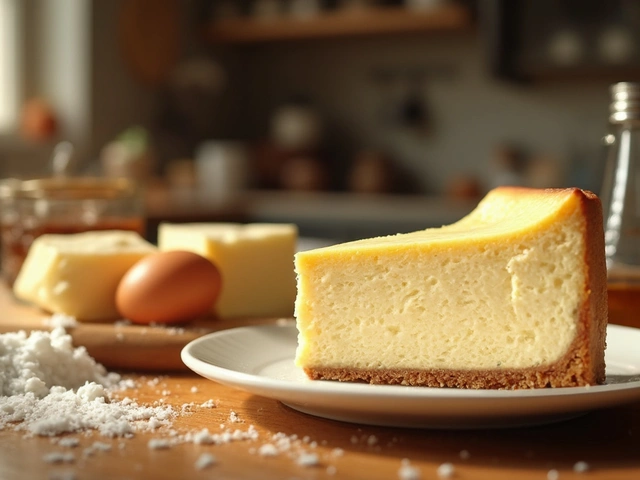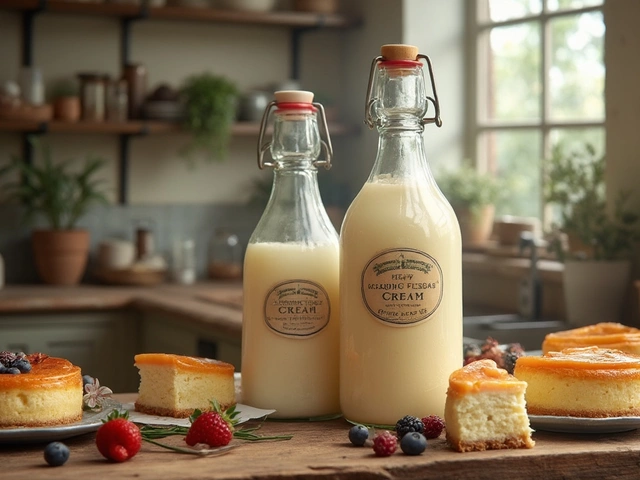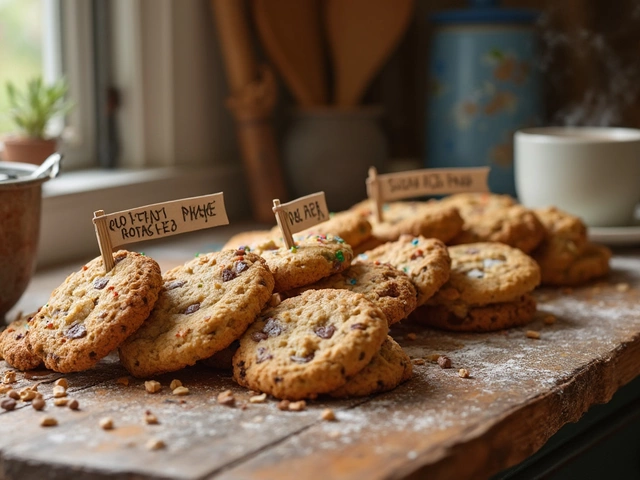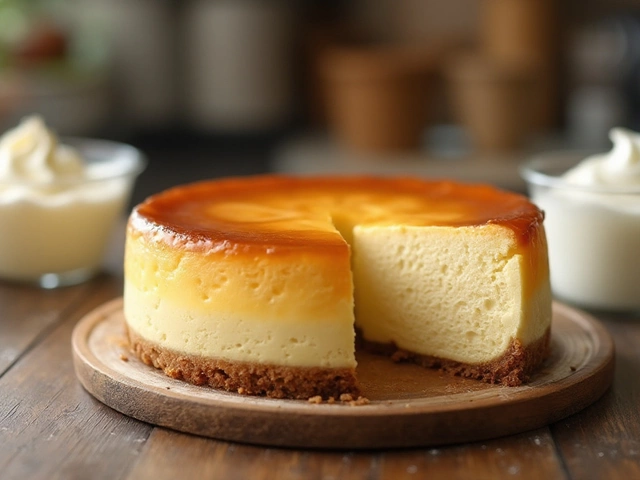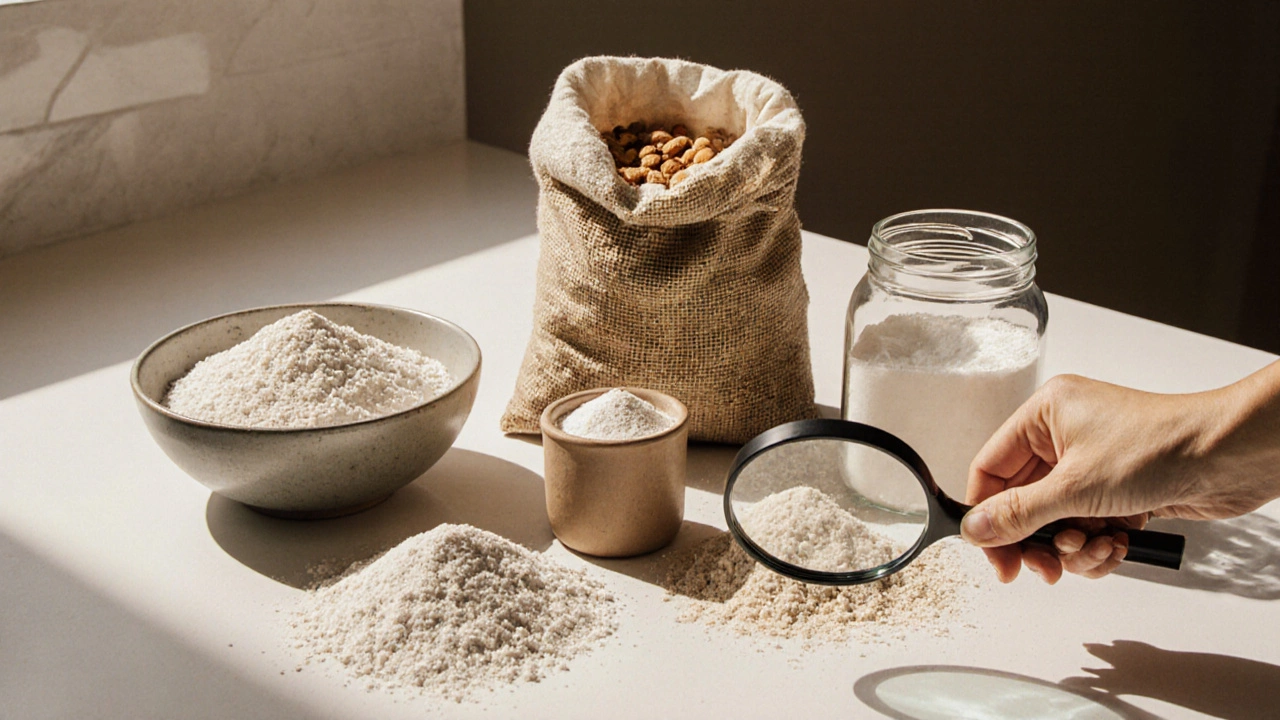
Gluten-Free Cake Flour Blend Calculator
Cake Type Selection
Select the type of cake you're making to get a recommended flour blend.
Finding the right gluten-free flour can feel like hunting for a needle in a haystack, especially when the goal is a light, tender cake. Not all gluten‑free flours behave the same way in the oven, and the wrong blend can leave you with a dense, crumbly mess. Below you’ll get the low‑down on the flour types that actually work for cakes, how to pair them, and a quick cheat‑sheet you can print and keep in your pantry.
Key Takeaways
- Almond flour gives buttery flavor and moisture but needs a binder.
- Rice flour is neutral and versatile but can be gritty if not blended.
- Sorghum flour adds a mild sweetness and excellent structure.
- Coconut flour soaks up a lot of liquid - use it sparingly.
- Combine a starch (rice, tapioca) with a protein‑rich flour (almond, sorghum) for best results.
What Makes a Flour “Cake‑Ready”?
When you bake a wheat‑based cake, gluten forms a stretchy network that holds air bubbles. In gluten‑free baking you have to recreate that network with other ingredients: starches for lightness, protein‑rich flours for structure, and hydrocolloids like xanthan gum for elasticity. A good cake‑ready gluten‑free flour blend balances these three pillars.
Top Gluten‑Free Flours for Cakes
Almond Flour is ground blanched almonds. It’s high in healthy fats and gives a moist crumb with a nutty aroma. Because it lacks gluten, you’ll need a binder (xanthan or guar gum) and a bit of extra liquid to keep the cake from drying out.
Rice Flour, especially the white variety, is the workhorse of gluten‑free baking. It’s neutral in flavor, fine‑textured, and absorbs moisture predictably. Pair it with a higher‑protein flour to avoid a gritty texture.
Sorghum Flour offers a sweet, earthy taste and a protein content close to that of wheat flour. It creates a tender crumb while contributing structure, making it a favorite for layered cakes.
Coconut Flour is a high‑fiber, low‑carb option that soaks up up to ten times its weight in liquid. Use it at just 10‑15% of the total flour weight, otherwise the batter becomes too thick.
Tapioca Flour (also called starch) adds chew and helps bind the crumb together. It’s flavorless and works well in combination with rice or sorghum flour.
Cassava Flour is made from the whole root, so it behaves more like a wheat flour than rice flour. It gives a soft texture but can taste slightly earthy.
Xanthan Gum and Guar Gum are the hydrocolloids that mimic gluten’s stretchy quality. Most gluten‑free cake recipes call for ½‑1 tsp per cup of flour blend.
How to Build Your Own Cake‑Ready Blend
- Start with a base of starches (rice, tapioca, or potato starch). Aim for 50‑60% of the total flour weight.
- Add a protein‑rich flour (almond, sorghum, or chickpea) for the remaining 40‑50%.
- Include 1‑2% hydrocolloid (xanthan or guar gum) by weight.
- If you like a subtle tropical hint, swap 10% of the starch for coconut flour, but increase liquid by the same amount.
- Mix the dry ingredients thoroughly before adding wet ingredients; this prevents clumping.
For a quick starter, try this 1‑cup blend:
- ½ cup white rice flour
- ⅓ cup sorghum flour
- ⅙ cup almond flour
- ¼ tsp xanthan gum
This mix yields a vanilla sponge that rises well, stays moist, and has a neutral enough flavor to pair with any frosting.
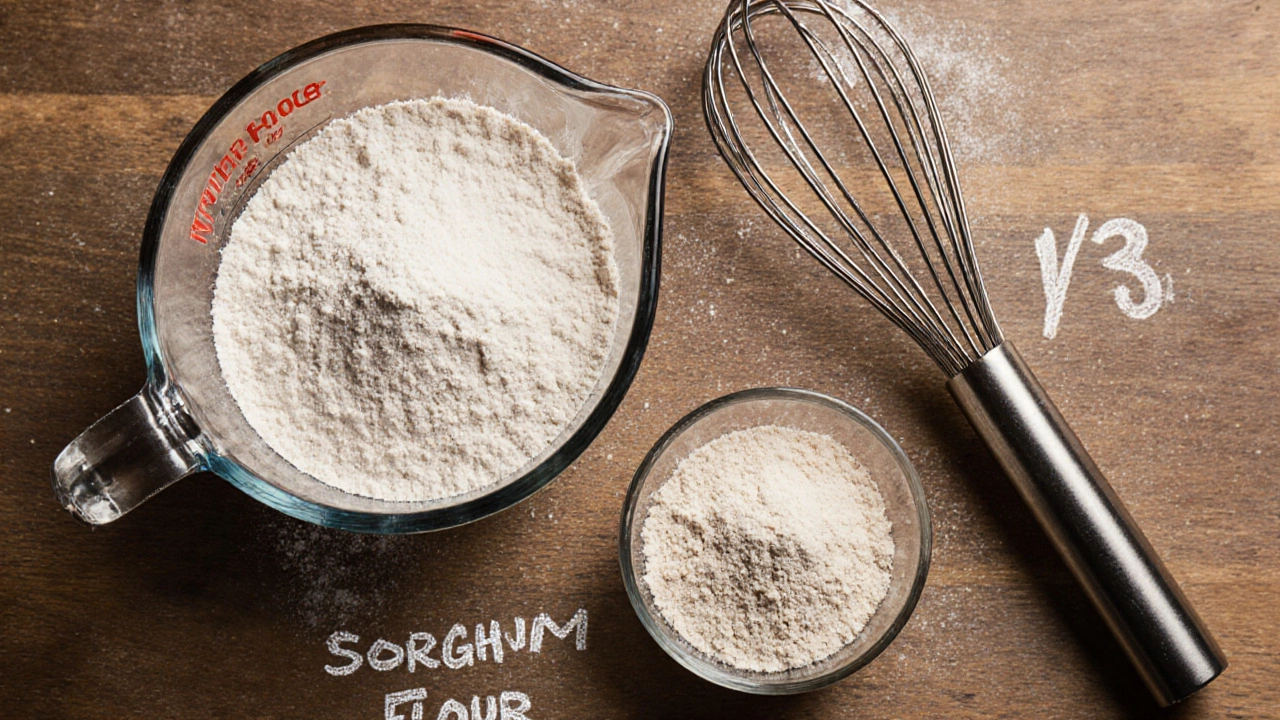
Comparison Table: Which Flour Fits Your Cake?
| Flour | Protein (%) | Absorption (ml water per g) | Flavor | Best Use |
|---|---|---|---|---|
| Almond | 21 | 0.6 | Buttery, nutty | Moist cakes, cupcakes |
| Rice (white) | 7 | 0.8 | Neutral | Base starch, light sponges |
| Sorghum | 11 | 0.7 | Sweet, earthy | Layered cakes, pound cakes |
| Coconut | 6 | 1.5 | Distinct coconut | Low‑carb desserts, frosting base |
| Tapioca | 0.5 | 0.9 | Neutral | Binding, glossy crusts |
| Cassava | 8 | 0.85 | Earthy | Fluffy cakes, pancakes |
Common Pitfalls and How to Avoid Them
- Dry batter. Gluten‑free flours can soak up more liquid than wheat flour. Keep an eye on batter consistency - it should be pourable, not thick like cookie dough.
- Gummy texture. Too much starch without enough protein leads to a gummy crumb. Balance the blend as shown in the table.
- Flat cakes. Without gluten’s lift, you need extra leavening. Add ¼ tsp extra baking powder per cup of flour blend.
- Grainy mouthfeel. Undersifted rice flour leaves a gritty texture. Sift the dry mix twice before combining.
Real‑World Test: Chocolate Cake Comparison
I baked two identical chocolate cakes - one with a 100% rice flour base, the other with the 50‑30‑20 blend (rice, sorghum, almond). The rice‑only cake rose well but felt a bit dry and crumbly. The blended cake was fluffier, held frosting better, and tasted richer thanks to the almond’s fat. This side‑by‑side test shows why a mixed approach usually wins.
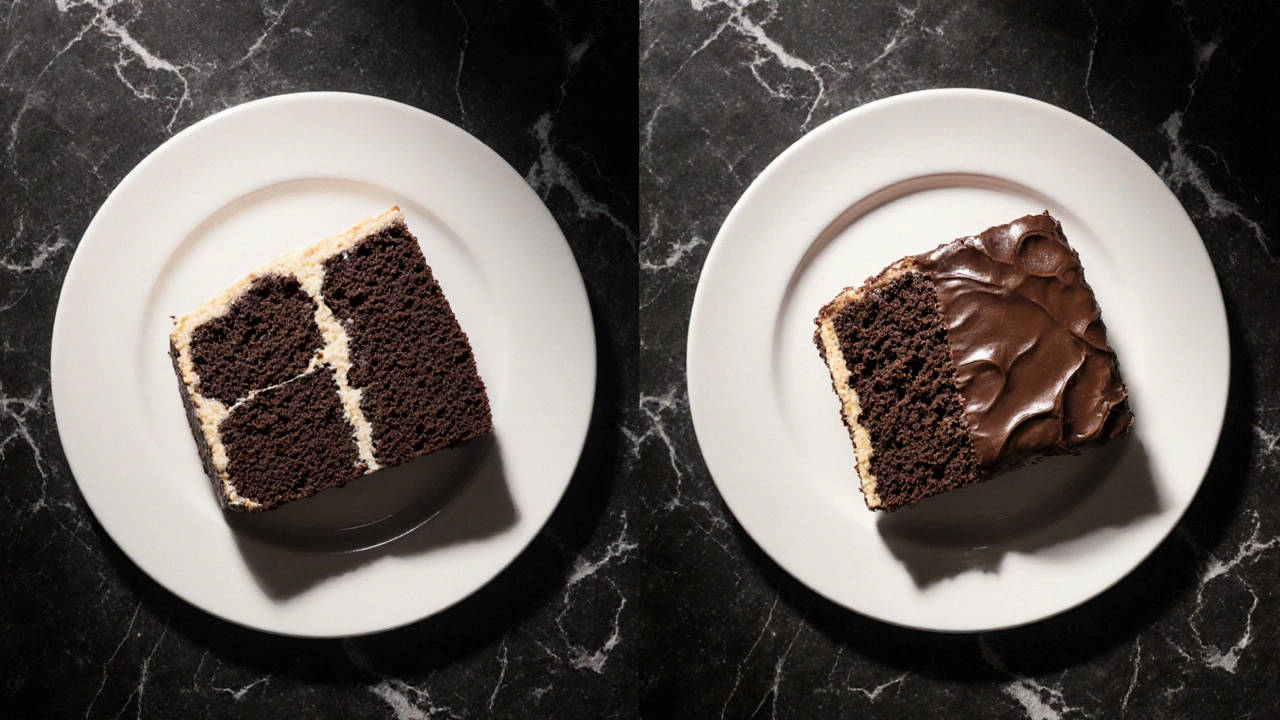
Quick Cheat‑Sheet (Print‑Friendly)
| Goal | Starch (% of blend) | Protein Flour (% of blend) | Notes |
|---|---|---|---|
| Light sponge | 60‑70 | 30‑40 (rice, sorghum) | Add ½ tsp xanthan per cup |
| Moist cupcake | 50‑55 | 45‑50 (almond + sorghum) | Increase butter/oil 10% |
| Low‑carb | 45 (tapioca) | 55 (coconut + almond) | Boost liquid 20% |
Frequently Asked Questions
Can I use a single gluten‑free flour for all cakes?
You can, but you’ll likely sacrifice texture. Single flours work best for specific cake styles - almond flour for dense brownies, rice flour for airy sponges. Mixing gives the most consistent results.
Do I need xanthan gum every time?
Almost always. It mimics gluten’s stretch, keeping the crumb from falling apart. If your blend already contains guar gum or psyllium husk, you can skip xanthan.
How do I store homemade flour blends?
Airtight container in a cool, dark pantry for up to three months. For longer life, freeze the blend - it won’t affect baking performance.
Can I substitute coconut flour for regular flour 1:1?
No. Coconut flour absorbs far more liquid. The rule of thumb is 1 cup coconut flour = 4‑5 cups regular flour, plus extra eggs or water.
Is sorghum flour safe for people with nut allergies?
Yes. Sorghum is a grain, not a nut, and is generally tolerated by those with nut allergies. Always check for cross‑contamination on the package.
Next Steps for Your Gluten‑Free Baking Journey
Pick a blend from the table, run a single test batch, and note how the crumb feels. Adjust liquid or binder based on the results - a little trial and error is normal. Once you lock in a favorite mix, label the container with the ratio and keep it on hand for all future cakes. Happy baking!


